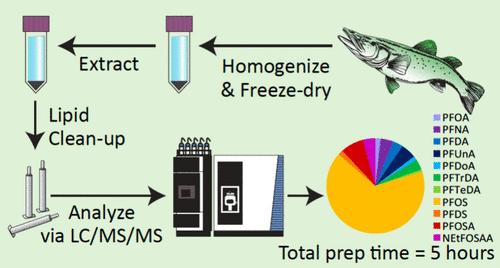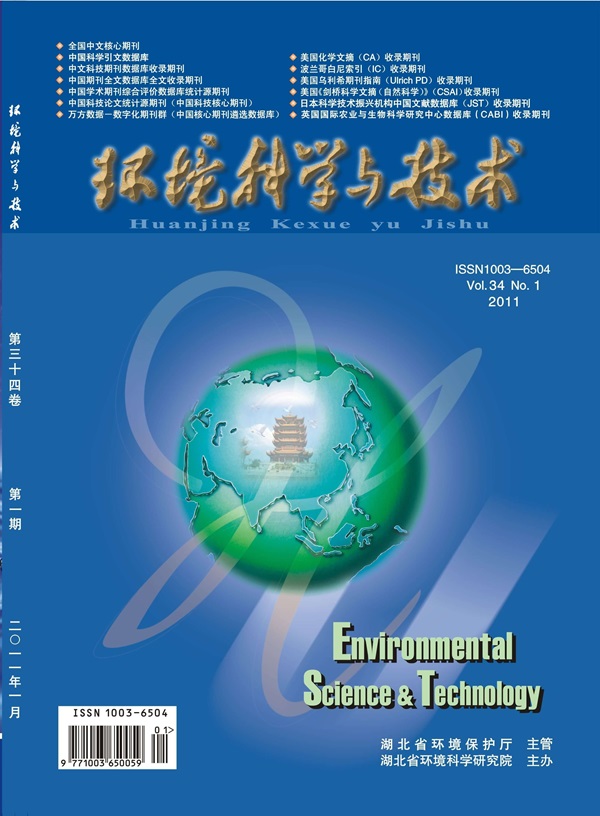A High Efficiency Method for the Extraction and Quantitative Analysis of 45 PFAS in Whole Fish
IF 10.8
1区 环境科学与生态学
Q1 ENGINEERING, ENVIRONMENTAL
引用次数: 0
Abstract
This study describes and validates a new method for extracting perfluoroalkyl and polyfluoroalkyl substances (PFAS) from whole-body fish tissue, demonstrates that freeze-dry preservation of tissue conserves bioaccumulative PFAS, and details a method demonstration on Lake Michigan fish. While fish filets are more commonly analyzed for their significance to human health, whole fish are useful to determine ecological impacts, but published methods such as EPA 1633 do not produce reliable results for this more challenging matrix. Here we show that lipid removal technology produces clean extracts without the need for solid-phase extraction or evaporative concentration, which often lead to loss of some PFAS. This method achieves an accuracy of 96 ± 9% for the detection of 45 PFAS while also offering benefits of a simple procedure, reduced processing time, and decreased waste generation compared to multistep cleanup and concentration methods. A test of freeze-drying demonstrated that compounds detected in Great Lakes fish were retained, but volatile compounds including sulfonamide precursors and ethanols were lost. To demonstrate field performance, the entire method was applied to whole-fish composites from Lake Michigan. Results from these samples reveal that the PFAS concentration was driven by collection location, while the distribution of PFAS was dictated by fish species.

求助全文
约1分钟内获得全文
求助全文
来源期刊

环境科学与技术
环境科学-工程:环境
CiteScore
17.50
自引率
9.60%
发文量
12359
审稿时长
2.8 months
期刊介绍:
Environmental Science & Technology (ES&T) is a co-sponsored academic and technical magazine by the Hubei Provincial Environmental Protection Bureau and the Hubei Provincial Academy of Environmental Sciences.
Environmental Science & Technology (ES&T) holds the status of Chinese core journals, scientific papers source journals of China, Chinese Science Citation Database source journals, and Chinese Academic Journal Comprehensive Evaluation Database source journals. This publication focuses on the academic field of environmental protection, featuring articles related to environmental protection and technical advancements.
 求助内容:
求助内容: 应助结果提醒方式:
应助结果提醒方式:


